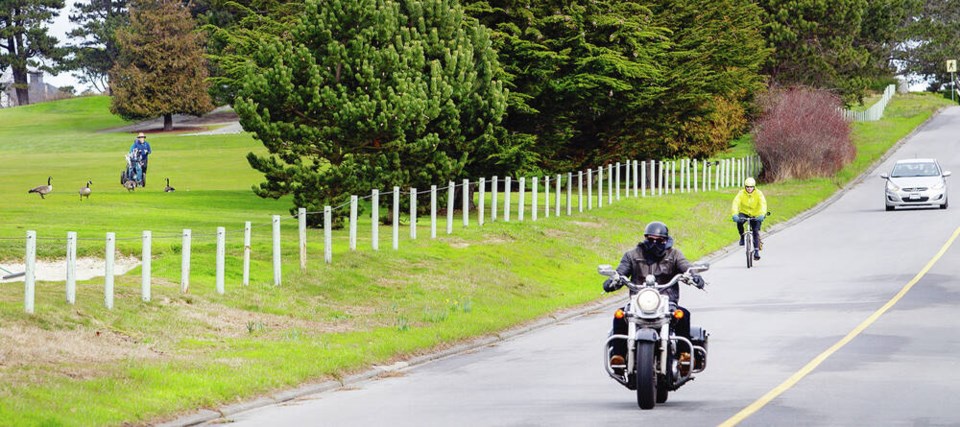Aside from the cherry blossoms appearing on many streets through our region there’s another sure sign that summer is almost upon us — the noisy motorcycle.
Based on the emails I’ve been receiving the past couple of weeks, it’s not just me hearing the problem.
Somehow there’s a false psychological equation made in the mind of some bikers that being “loud and proud” has something to do with personal freedom. The other absurdity often in play is that a rider is somehow safer when their bike is noisy because they will be noticed more by other road users.
The freedom argument has never worked for me. Why obey any law then, if you think it interferes with your idea of what freedom is all about? That argument also collapses when your freedom threatens my own use of public space, including my freedom not to have to insert earplugs when you cruise by.
Noise as a safety enhancer is also dubious. Excessive noise cuts both ways — meaning that a rider’s ability to hear emergency vehicles, car horns and any number of approaching threats is also gone. I’ll leave aside what that sustained noise does to your own hearing after summers of prolonged exposure. But perhaps you ride with earplugs to protect yourself. Finally, I’ll point out that tailpipes point rearward on a bike. Not so good for warning traffic in front, where the actual threats to riders exist.
Exhaust noise in B.C. is limited to 91 decibels for motorcycles. Light duty vehicles, as a comparison, are restricted to 83 decibels. But it’s not just about sound. The regulations also prohibit the exhaust pipe from being cut or altered, opened or widened — regardless of the level of noise they make. Regulations also require that exhaust pipes comply with a manufacturer’s original specs at the time a bike was produced.
That leads to my perennial argument about why repair and aftermarket shops are not prohibited from making these annoying alterations in the first place. It’s most likely because enforcement action would be complicated. That’s a fair point, but just a few fines and licensing actions to mechanical scofflaws would be a huge deterrent.
The idea of an automated “sound snare” device was tried by the city of Calgary back in the mid 2000s. The device would record video of passing vehicles while measuring their sound output. Vehicles exceeding the legal threshold would trigger the device to preserve the video of an offending vehicle and its sound output for later prosecution. The program faltered, however, over a dispute with the manufacturer and problems with the city’s bylaw, which failed to define how close or far away a noisy vehicle had to be when the violation was captured. It’s an idea worth a second try.
The fine for operating a noisy vehicle in B.C. is $109 and three demerit points. Another route the cops can take is to order an inspection of the vehicle, forcing the driver to comply with any number of vehicle equipment violations they might find. Ignoring one of those orders costs $598 and a possible vehicle impoundment.
I’d say that given the number of complaints I and municipalities must receive, it might be time to levy those inspection orders with every excessive noise ticket handed out — for the sake of some peace and quiet.
Glove Box: It’s been a year since Oak Bay municipal worker Steve Seekins was struck down and killed in a work zone by an allegedly erratic driver. According to authorities, the investigation is a complex one and with the length of time it has taken so far, any provincial driving charges are now no longer possible. What isn’t complex is the need for drivers to understand how vulnerable road crews and flaggers are when they’re doing their jobs.
Gord Woodward, the communications manager for Road Safety at Work, reminds us that the annual Cone Zone Safety awareness campaign is underway in B.C. Nine workers have been killed and another 251 injured in B.C. during the past decade while simply tending to their trades along B.C. roads. Speeding, distracted driving and sometimes just a lack of willingness to obey directions on the part of some drivers are the leading causes of road worker deaths or injuries.
The program kicked off last week in Surrey with an enforcement blitz. In the first morning alone, the Mounties issued 38 violation tickets. It’s going to be a long summer of construction and delay everywhere in B.C. Let’s not take it out on our road crews.



